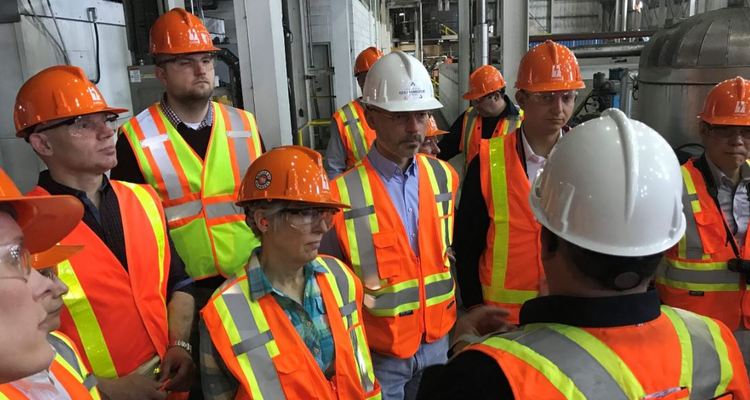980 CJME
Lisa Schick
May 31, 2019
On Thursday, members of a delegation from COP24 — the United Nations body which makes decisions around the UN’s framework convention on climate change — toured the carbon capture and storage sites at Boundary Dam and the Shand Power Station near Estevan.
Michal Kurtyka, the president of COP24 and the secretary of state for Poland’s Environment Ministry, was part of the delegation.
Kurtyka said Poland is interested in carbon capture, and has tried a project before but not to the scale of the Boundary Dam project.
“It is extremely important what’s going on here in Saskatchewan, not just in terms of the existing facility but also in terms of research — proving that the cost can go down and that it can be a solution for future challenges,” said Kurtyka.
He said there have been a number of conversations on carbon capture in different countries around the world, from Norway and Germany to South Korea and Japan.
When Kurtyka was asked his opinion on the series of missed sequestration targets at Boundary Dam, he said a first pilot project is difficult. He said he has now seen both the facility and upgrades that have been made.
“I think it serves as lessons learned, as input for designs for future installations, and that’s also an important topic of our discussions here,” said Kurtyka.
Environment Minister Dustin Duncan said the province has been open about the benefits and challenges in carbon capture, and said one of the big roles of the knowledge centre is to transfer the knowledge the province has received from this project around the world.
“Knowing that this was first generation technology of its kind of this scale — you know, the first computer that was ever made, (it’s a) good thing we never stopped with that one just because we had a few problems; we’d never have iPhones and iPads today,” explained Duncan.
Duncan said he can see carbon capture being deployed in other areas in the future, especially as more countries continue using coal and others potentially bring more coal-fired power plants online.
According to Duncan, other countries taking on carbon capture projects will be positive for Saskatchewan.
“The more deployment of CCS (carbon capture and storage) that we see in the future, that’s only going to help bring the cost down, both on the capital and the operational sides …,” he said. “I think that’s where the benefit comes from, is the potential that CCS could be deployed around the world and what that may mean for potential for further CCS in Saskatchewan.”
Duncan said he was delighted to have the COP24 delegation in Saskatchewan to tour the facilities and hoped the visit would create a fruitful relationship in the future. He seemed satisfied the president of COP24 felt it worthwhile to come to Saskatchewan.
“The more that we can build these relationships, the more that it will hopefully help us see more deployment of CCS around the world going forward into the future,” Duncan said.
—–
Click here to link to original article.
Please note: The content and external links within this article do not constitute an endorsement or an approval by the International CCS Knowledge Centre (Knowledge Centre) of any products, services, or opinions of the authoring corporation, organization, or individual. The Knowledge Centre bears no responsibility for the accuracy, legality, or content of the external site or for that of subsequent links.
